There are some wise sayings underlying training that every now and again I like to remember. One of them is “Ask less, reward more”. This reminds us that our horses, like us, learn from the reward, or the release of pressure. The more often we reward, the faster they learn and the more likely they are to try to do what we ask.
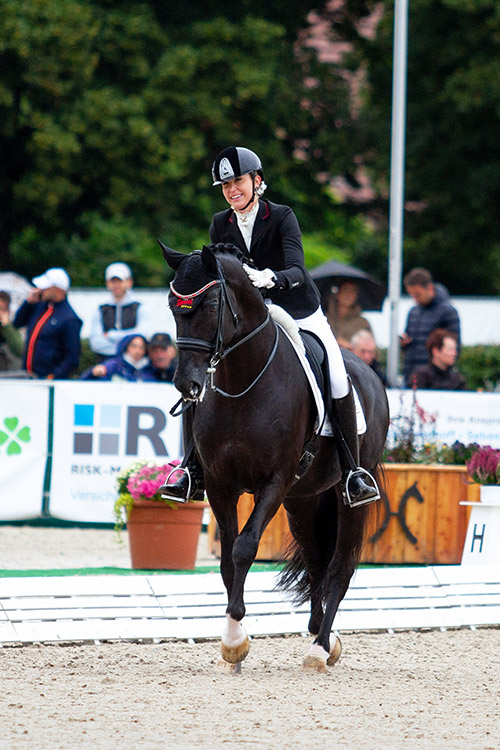
Ask less means asking for what you want in little steps, and then rewarding each step. We call this “shaping behaviour”. It is the frequent rewards that will encourage your horse to join your team, to want to do what you want to do. One of the nicest things that happens as you train your horse is when they start to anticipate what you want and offer it before you ask; when they have the tiniest suggestion that, for example, you want to go from trot to walk and before you have really asked, the horse offers it. He may have discerned the change in your core muscles before you have used the big aids of the reins.
A reward might be an instant softening in your fingers, not always a giving away the contact. He will feel you relax you fingers. A reward might be a loosening of the contact, or taking away the leg or the whip. A reward might be a few steps where you just allow him to bowl along without any pressure, or a few steps in forward seat. A reward might be a scratch on the wither. A reward might be a walk or halt break (but try to do a nice transition down). A reward might be a treat. Or if he does something really good, you might get off and put him away for the day.
To get to the higher levels of any discipline, we make progress step by step. Heath Ryan says “millimetre by millimetre”. Ask less means thinking about the smallest steps towards what you want and starting there. For example, if you want to do some gymnastic jumping, start with your grid as rails on the ground, then cross rails, and slowly build upon it as he understands the task and builds confidence. Jumping riders understand that if the horse makes a mistake or stops at something, the trainer should lower the fence so the horse can be confident, and then build it up, step by step.
You want to work on the laterals, so you start with a few steps of leg-yield and reward. If he doesn’t know this exercise, start on a small circle so he wants to make the circle bigger and then ask him to yield. A few steps sideways and reward by going forwards. Ask again. Reward again. Gradually you can make it more difficult by changing the bend into a shoulder-in, and then the travers, renvers and half-pass. When he is learning the half-pass, be happy with a few steps and reward by going into the shoulder-in, and then you can ask for a few more steps. If you have 5-7 repetitions of a few steps, be happy and give a bigger reward and walk or finish.
You want to work towards flying changes. Make sure you have a reliable and balanced transition to canter. Reward and repeat. It will help if he is able to bend to the outside in canter, bending around the leg that will become the new inside leg. Ask this in a friendly way on a circle, or on a quarter line. When I say ask in a friendly way, I mean ask for a tiny bit of counter flexion, then reward. Gradually you can ask for more, step by step. When he is confident and supple in this you might want to bring the shoulder a little towards the new inside so that the shoulder leads into the change and the hind legs are carrying the weight. So, you ask this millimetre by millimetre.
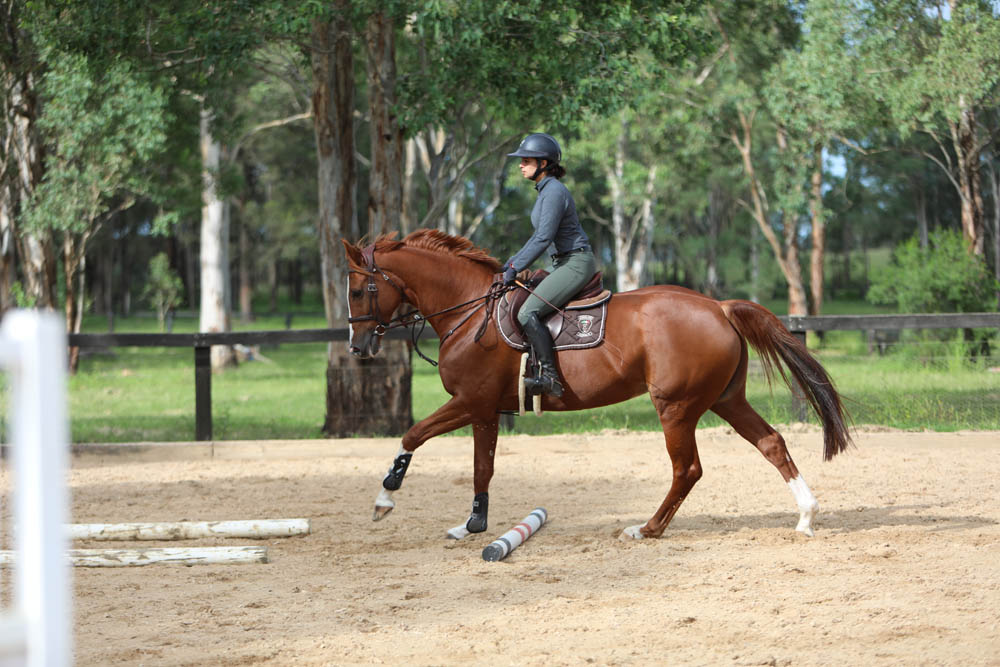
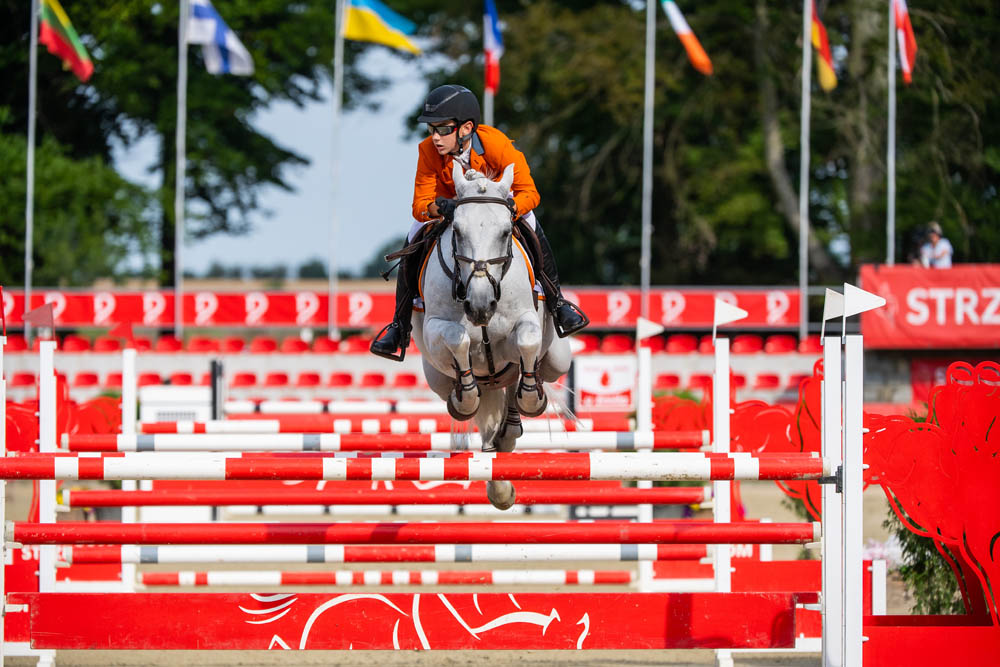
To get a clean flying change you might need him to make his hind leg quick and stepping under the body. This will help him change cleanly from behind. So, you might want to be able to move the outside hind leg to the inside (like the leg-yield). Each time you just ask for a tiny amount for a short time, and reward. Repeat. Gradually he will build the suppleness, balance and obedience to be able to do a renvers at canter. All these steps will help him understand what you want before you ask for a flying change. Of course, some horses will understand with fewer steps of preparation, but by building a solid foundation he will progress in a way that when you ask for the next step he will be able to understand what you are asking.
Don’t continue to ask for whatever you are working on to be perfect before you reward. Greed is a deadly sin in training horses, just as it is in life more generally.
Lockdown is giving a lot of us the opportunity to focus on training our horses without the pressure of competition. However, even without the pressure of competition it is easy for us to put pressure on ourselves. It is easy to think things like “he is six, he should be able to do a flying change by now”. This is our agenda. The horse has a totally different concept of time. I would suggest that when you find yourself thinking “should” (e.g. he should be doing something in particular that he isn’t doing) it’s best to let go of the “should” and get back to a ladder that step by step gets you to where you want to be. When we think he should be doing something in particular, we are vulnerable to thinking that he is being obstructive to our goals, whereas it’s more likely that he doesn’t really understand.
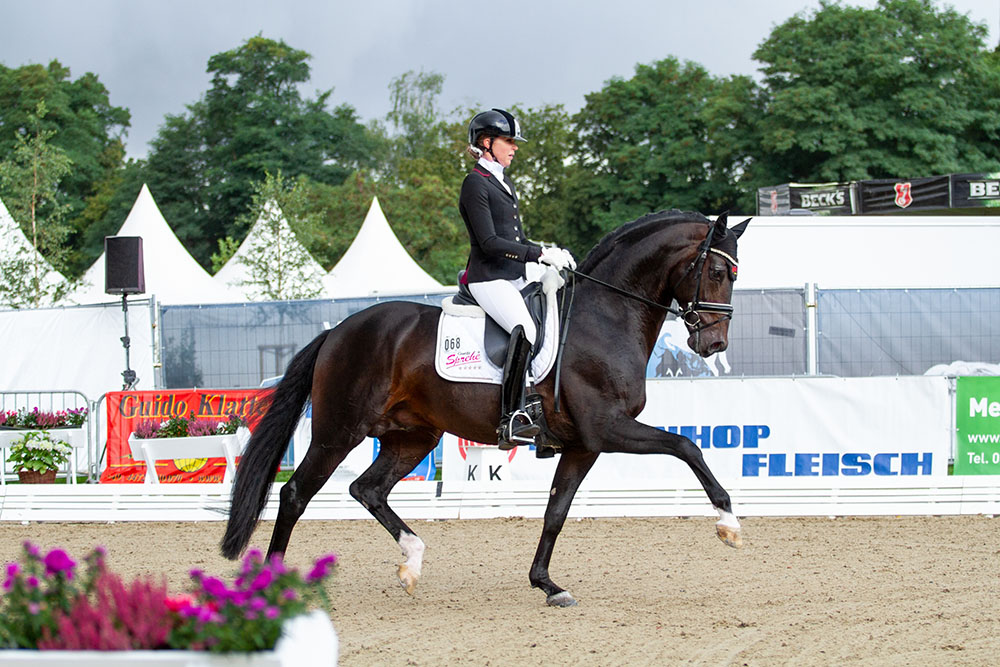
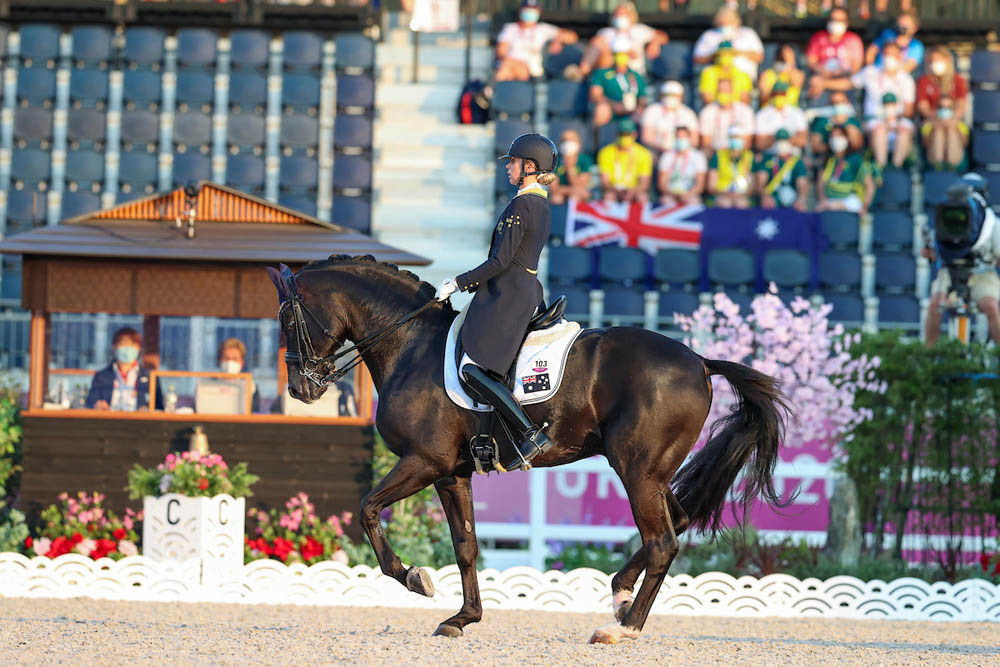
So, your job as his trainer is to find those small steps that will take you incrementally to where you want to be training-wise. Even if last week he seemed to understand or this week he has decided that he no longer goes forwards from your leg, try to start by asking a small question that he is prepared to answer with a yes; for example, get his feet moving by bending him and pushing the hindquarters out like a soft turn on the forehand. You may want to do this in-hand first (the smallest step, remember) to make sure that he knows to yield the hindquarter. Once his feet are moving in the turn on the forehand exercise he is more likely to answer the leg and go forward. If he changes his mind, just bend again and yield the quarters. Remember that a bent horse is a softer horse and is more under control. He will find it hard to escalate into a rear or a buck if his neck is really bent around. Asking less sometimes means finding a small question that they will say yes to, rather than persisting in asking a “bigger” question that he has said no to and just upping the anti by adding more pressure or force.
A horse that starts the day a little lazy and slow off your leg will often agree to move forwards more energetically if you ask him incrementally to be quicker, rather than just using a lot more strength at the beginning of the lesson. Just ask for little transitions within the pace, a little bit more trot, a little bit less trot and back again to the bigger trot. Trot and almost to walk and out again, reward with soft hands, a few repetitions and a walk break.
If you notice that you are reacting to him by using more force, just try for a moment to ask a smaller question and get to what you want “millimetre by millimetre”. Of course, sometimes you do need to apply enough pressure that you will get the reaction you seek so that you can reward him.

A horse can feel a fly on his side, so he can notice a tiny touch with a hand or a leg or a stick. If you want him to respond to a tiny touch, you must give a very tiny touch, give him time to react, and reward him when he does. If he doesn’t respond then give a stronger aid and reward the reaction. But next time, ask with the tiny aid and give him a chance to react to the tiny aid. Don’t be fatalistic and always use the strong aid that you know he will react to, if you want him to become more sensitive.
Let him become familiar with the idea that he can respond to a light and gentle aid when you are handling him from the ground. When you pick up his feet, or move him sideways, first ask with a very small aid before asking more strongly. Help him become attuned to the light touch, and understand that the light touch may mean something. Make sure that you take the pressure off immediately when he yields to your pressure. Praise him, scratch him on the withers, give him a treat. This is another form of asking less, asking for a response to a lighter aid.
Training should be enjoyable and interesting for you and your horse. I suggest seeing the challenge in working out all the small questions that ask less so you can reward more, especially if you find yourself at a little impasse. Let’s come out of lockdown with better trained and happy horses. Have fun. EQ
READ MORE BY DR KERRY MACK:
So You Want To Go To The Games? – Equestrian Life, September 2021 issue
The Ins & Outs Of Bitless Bridles – Equestrian Life, July 2021 issue
Taking The Plunge With The Lunge – Equestrian Life, June 2021 issue
Dressage for Showjumpers – Equestrian Life, May 2021 issue
23 Shoulder-In Exercises to Improve Your Horse – Equestrian Life, April 2021 issue
Understanding Your Horse’s Inner Thoughts – Equestrian Life, March 2021 issue
Make the Most of Your Seniority – Equestrian Life, February 2021 issue
Building Better Relationships – Equestrian Life, January 2021 issue
Whipping Up Controversy – Equestrian Life, December 2020 issue
The Importance of a Trusting Relationship – Equestrian Life, November 2020 issue
Welcome to Kindergarten for Foals – Equestrian Life, October 2020 issue
The Carrot or the Liquorice? Positive Reinforcement – Equestrian Life, September 2020 issue
Submission or Stress? Something to Chew On – Equestrian Life, August 2020 issue
A Relaxed Horse is a Happy Horse – Equestrian Life, July 2020 issue
The Literate Horse Rider – Equestrian Life, June 2020 issue
Why Horses Love Ingrid Klimke – Equestrian Life, May 2020 issue

